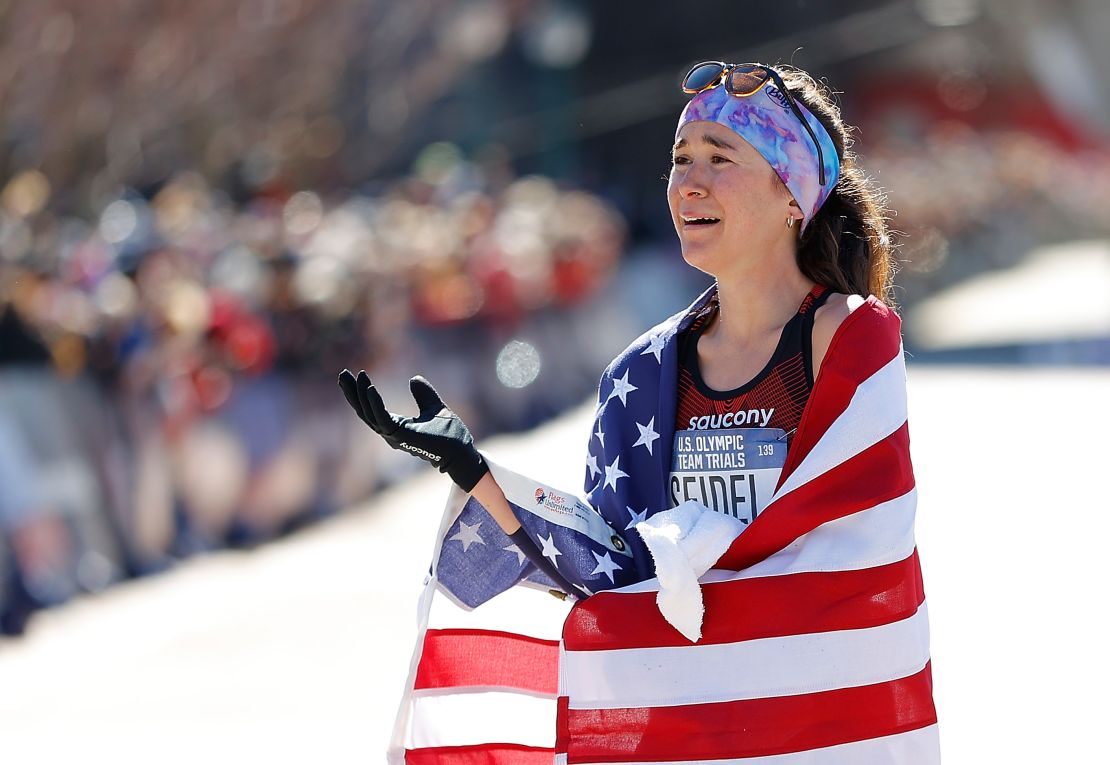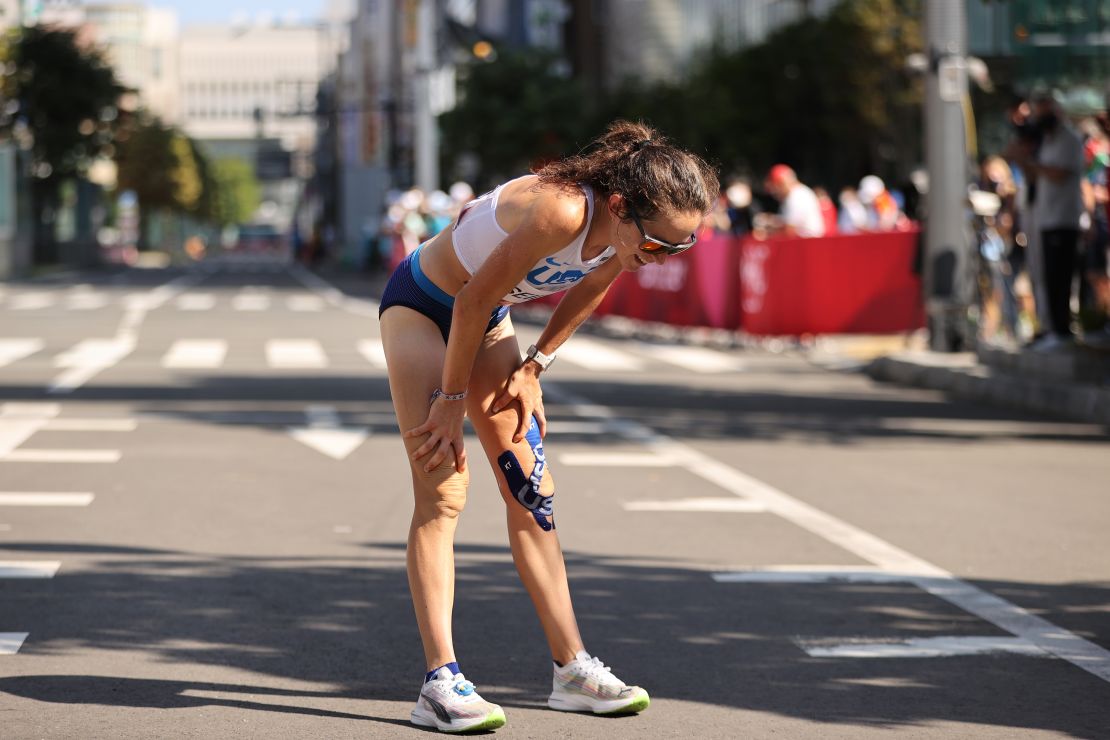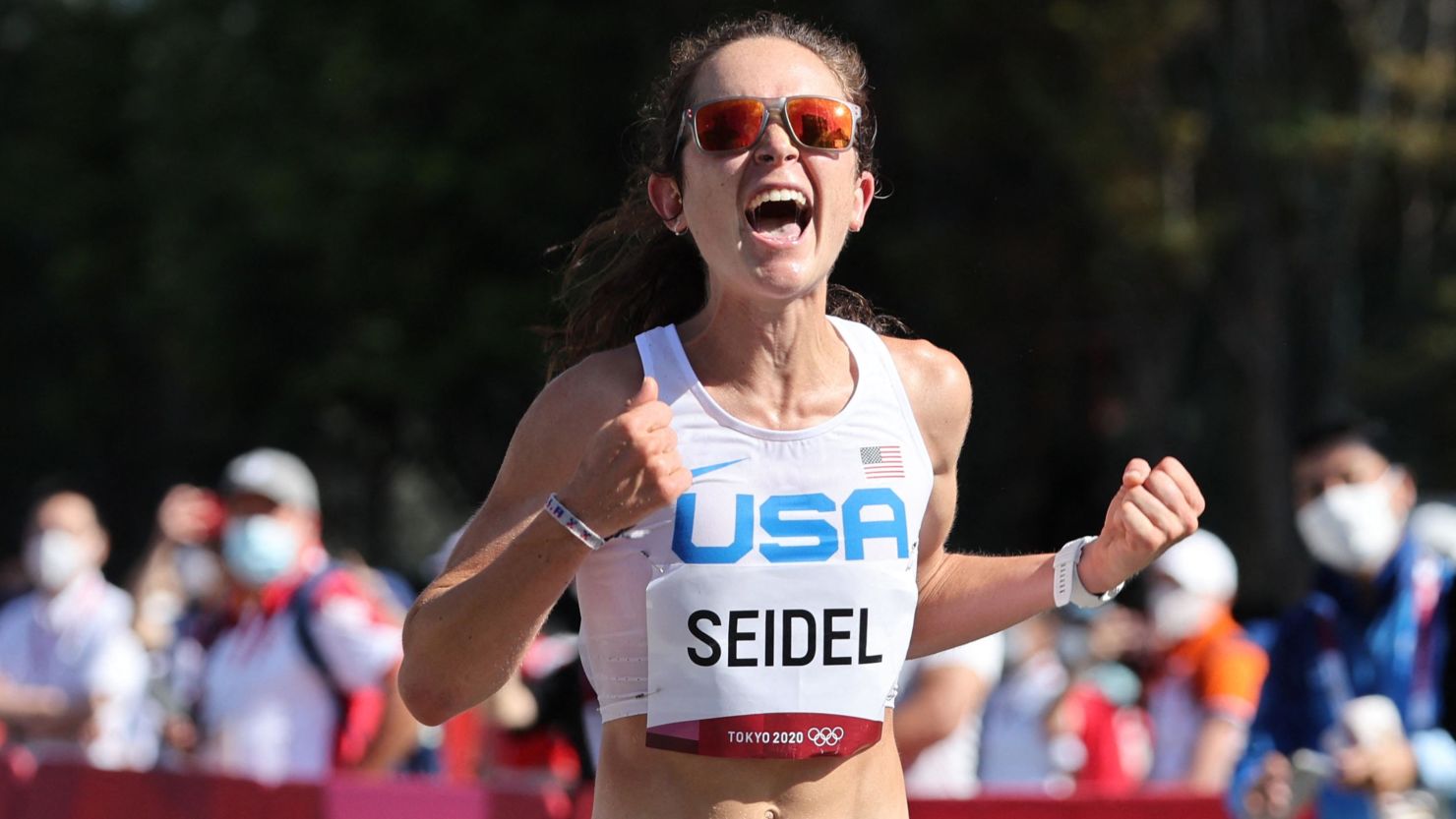Mastering the art of marathon running is a lifetime pursuit for some, but it seemed to take Molly Seidel roughly two-and-a-half hours on one windswept morning in Atlanta a couple of years ago.
That was during the US Olympic trials when Seidel, competing in her first ever marathon, stunned the field to place second and qualify for the US team.
Fast-forward to 2022 and, three marathons later, the 27-year-old Seidel can now call herself an Olympic medalist and the fastest American woman ever at the New York City Marathon.
Having taken to the start line of her debut marathon in Atlanta hoping to place in the top 20 – with the prospect of competing, let alone medaling, at the Olympics a remote thought – she’s the first to admit the race “blew away all of my expectations.”
“Life has a funny way of giving you what you need before you think you’re ready for it,” Seidel tells CNN Sport, weeks out from the fifth marathon of her career in Boston next month.
While many distance runners step up to the 26.2-mile marathon distance towards the end of their careers, Seidel was a comparatively early convert having made the switch from track racing in her mid 20s.
Partly, that was due to her frustration with running 10,000m on the track – “I kind of kept banging my head against the wall with that one,” she says – and partly due to ambitions she had held growing up.
“I always kind of dreamed of doing the marathon,” Seidel adds.
“I think there’s just this kind of like glamor and mystery around it, and especially for a younger runner who enjoys doing the distance events in high school, that’s kind of the ultimate goal. Everybody wants to do the marathon.”

Seidel’s success at the Olympic trials wasn’t without challenges. As the pandemic delayed the Tokyo Games by a year, further opportunities to prove her credentials in the marathon distance were placed on hold.
“I struggled with this kind of imposter syndrome after the trials, specifically as probably the person no one expected to make the team and the person that got probably the most criticism like: Hey, why is this girl on the team?” she says.
“I think I really struggled with that, and I struggled going into the Games and feeling like I belonged there and trying to prove that I wasn’t a mistake on that team.”
The postponement of the Olympics did give Seidel the chance to compete in a second marathon – a sixth-place finish on a modified, elites-only London course involving 20 laps around Buckingham Palace – before gradually turning her attention to the Games.
When the Olympic Marathon came around 18 months after she had qualified for the team, Seidel once again exceeded her own expectations with a typically gutsy, gritty performance in the sweltering heat of Sapporo.
As leaders Peres Jepchirchir and Brigid Kosgei of Kenya pulled away in the closing stages of the race, Seidel found herself vying for a medal alongside Israel’s Lonah Chamtai Salpeter.
But with two-and-a-half miles remaining, Salpeter hit a wall and faded from contention.
A medal was now Seidel’s to lose, and she duly wrapped up the bronze with a scream of joy as she crossed the finish line – the third US woman ever to medal in the Olympic marathon.
“I struggle with confidence and I struggle with wondering whether or not I belong at this level, whether I belong as a competitor on the world stage,” says Seidel.
“The Olympic medal was kind of showing me: Hey, you belong here, and you can do this regardless of any insecurities that you might feel,” she adds. “You can still go get beaten, you can still have a lot of work to do, but you can do this.”
That run at the Olympics – brutal and energy-sapping in itself – was made all the more draining because of the circumstances around the Games.
“Yes, we were coming off this emotional high winning the medal,” says Seidel, “but there had been so much just pent up stress over the course of the Games and leading into the Games with Covid, with the quarantine, wondering if the Games are going to happen.
“And so I came back and frankly, I was just tired and emotionally exhausted and spent.”
After returning to her family in Wisconsin – “a detox from the amount of stress that I’d been holding throughout the entirety of the Games,” according to Seidel – she started her buildup to her fourth marathon in November, this time in New York.
But obstacles – physical as well as mental – kept appearing. Two broken ribs she suffered ahead of the race hadn’t healed with race day looming, and her coach Jon Green suggested she wasn’t ready to compete.
“It was an absolute disaster of a buildup,” says Seidel.
“It was really hard, not only with the mental stress that we had going on after the Games of just feeling, frankly, no motivation. And just trying to find that drive to re-up for another hard race right after an enormous race that I’d been training effectively two years for.
“And then it was just like problem after problem after problem, and injury after injury.”

Even with two of her ribs broken, Seidel says she “felt incredible” during the race, setting a new course record for an American woman of two hours, 24 minutes and 42 seconds and placing fourth.
She had planned to make a return to the streets of New York this weekend for the NYC Half, but announced on Tuesday that “setbacks in training” – which are not infrequent occurrences when you’re running up to 135 miles a week – have meant she took the decision to stay at her training base in Flagstaff, Arizona ahead of the Boston Marathon.
“It’s super tough,” Seidel said on her high-mileage schedule.
“It’s hard, but I think it’s a matter of learning how to balance. Your body adapts over time and I make sure I’m getting sufficient rest and all that. It’s a challenge, but I love the challenge of it.”
Seidel is no stranger to training setbacks and has previously explained how her “very high pain tolerance” has caused her to push beyond discomfort and exacerbate injuries. In her first year as a pro runner from 2017 to 2018, for example, she ran on a broken pelvis for a year.
A lot has changed in her running career since then. Broken bones have healed and Seidel has established herself as one of the best marathon runners in the world. But that’s not to say there are no more goals to chase, nor that there are no more lessons to learn.
Each marathon, she explains, brings with it fresh experience and a renewed sense of joy.
“I feel like every single time it’s just kind of wild,” says Seidel.





